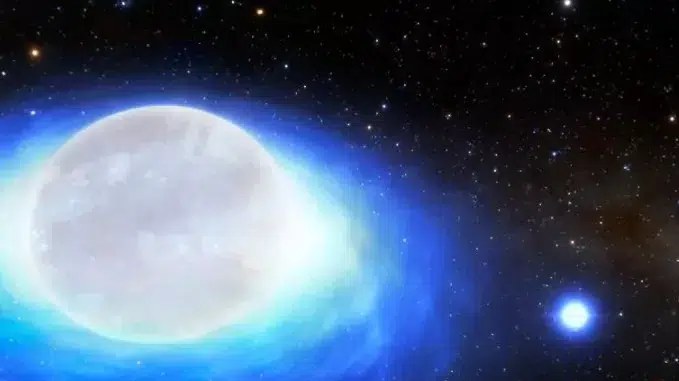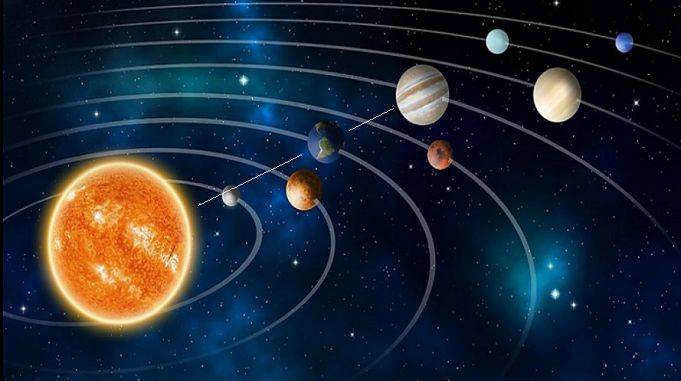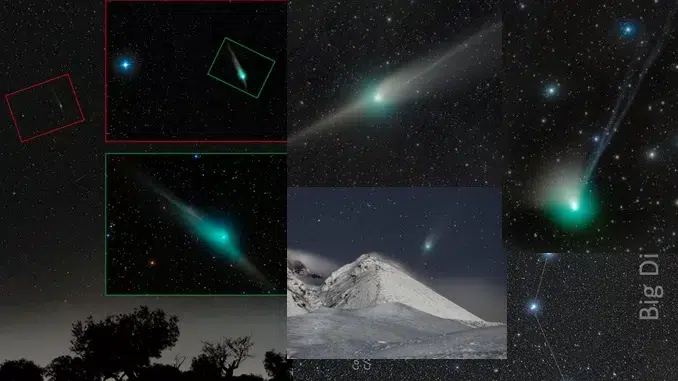
The End of a Supernova: A Rare Twin Star System with an Oddly Circular Orbit discovered.
Clarissa Pavao is an undergraduate at Embry-Riddle Aeronautical University’s Prescott, Arizona campus. After crunching a mountain of astronomy data, Pavao submitted her preliminary analysis.
Her mentor’s response was swift and in all-caps. “THERE’S AN ORBIT!” he wrote. This article was published in the peer-reviewed journal Nature on February 1, 2023.
In this article, a rare binary star system with uncommon features is described. The article also mentions a twin-star system that is luminous with X-rays and has a large mass.
Read Also – Astronomers discover “12 more moons” for Jupiter, making it the “King of the Moons”
The twin-star system is an oddity among binaries with the feature of a weirdly circular orbit. The twin system seems to have formed when an exploding star or supernova fizzled out without the normal blast, similar to a dud firecracker.
The circular orbit of the binary was an important clue that assisted researchers in identifying the second star in the binary system as a depleted or “ultra-stripped” supernova.
Usually, a star’s core collapses after consuming up all of its nuclear fuel before exploding as a supernova into space. The star in this instance, according to Richardson, was so exhausted that the explosion didn’t even have enough energy to transform the orbit into the more typical elliptical shape observed in similar binaries.

They are Stardust –
The name of the binary system is CPD-29 2176, which sounds like a license plate. At present, there are perhaps only about 10 such star systems in the Galaxy, according to researchers.
“We’re looking backward through the time when we see at these things,” Pavao explained. “We learn more about the universe’s beginnings, which will help us understand the future of our solar system. He said, “As humans, we began with the same elements as these stars.”
Without binary systems like CPD-29 2176, Richardson added, life on Earth would be very different. According to him, such systems are expected to evolve into binary neutron stars, which eventually merge and produce heavy elements that get hurled into the universe.
Read Also – Climate Change – Are Rocket Launches damaging the Ozone Layer?
“Those heavy elements enable us to live as we do”. For example, the majority of gold was created by stars like the supernova remnant or neutron star in the binary system that we studied. Our understanding of the world and our role in it is deepened by astronomy.
Exactly how did this project begin?
The project started when Pavao stopped by Richardson‘s workplace in hopes of a research opportunity. “Pavao asked for any research.'”
He happened to have data from a bright star known as a Be-type star that was recorded by the Cerro Tololo Interamerican Observatory’s 1.5-meter telescope in Chile.
The Be star was situated near another star that had produced a large flash of X-rays in the sky. That flash, which is likely something called a “soft gamma repeater,” had attracted the attention of astronomers.
Pavao plotted the Be star’s spectra, but first, she had to clean up the data so they were less noisy.
She pointed out that although, a telescope looks at a star and it takes in all the light so that you can see the elements that make up this star, but Be stars typically have discs of matter around them. It’s hard to see directly through all that matter or stuff.
Richardson and Pavao found one simple line that came from the star and was unaffected by the disc around it. Pavao thought her graph was a scatterplot. Although they had found an orbit for the star, Richardson realized that it wasn’t what they had expected.
Further analysis of the data revealed that one star was really tracing a circle around the other star one every 60 days or so. Pavao recalls Richardson saying, “This is not just a simple binary system.”
Read Also – Scientists discover fossils of a giant sea lizard, Thalassotitan Atrox
Jan J. Eldridge of the University of Auckland, a co-author on the Nature paper and a foremost expert on understanding binary star systems and their evolution, joined them.
Eldridge reviewed thousands of binary star models at Richardson‘s request, but he found only two that were analogous (similar) to the one that he and Pavao were studying.
Eldridge and colleagues then depicted the evolution (or life cycles) of the two binary system stars, describing how the supernova remnant had puffed up and dumped mass onto the Be star until it began to build up, too.
The supernova eventually became a low-mass helium star that exploded, leaving a neutron star behind. But the explosion was lackluster (not particularly impressive) because the supernova had already transferred so much of its mass to the Be star.
Read Also – Neutron star & Universe Mysteries revealed via skin of atomic nucleus
In essence, according to Pavao, “we discovered how the ultra-stripped supernova interacts with the Be star and how it goes through these peculiar life-cycle phases.”
“As the cycle continues, the Be star will eventually become a supernova neutron star. Millions of years from now, it will become a binary system with two neutron stars.
“It was a life-changing experience,” Pavao said.
Read Also – Stars are rapidly disappearing from the night sky. Why is this?
Copyrighted Material © 2019 - 2024 Prinsli.com - All rights reserved
All content on this website is copyrighted. It is prohibited to copy, publish or distribute the content and images of this website through any website, book, newspaper, software, videos, YouTube Channel or any other medium without written permission. You are not authorized to alter, obscure or remove any proprietary information, copyright or logo from this Website in any way. If any of these rules are violated, it will be strongly protested and legal action will be taken.





Be the first to comment